Screenprinting is an increasingly popular method of printing for beginners and professionals alike because it can accommodate a wide range of finished effects.
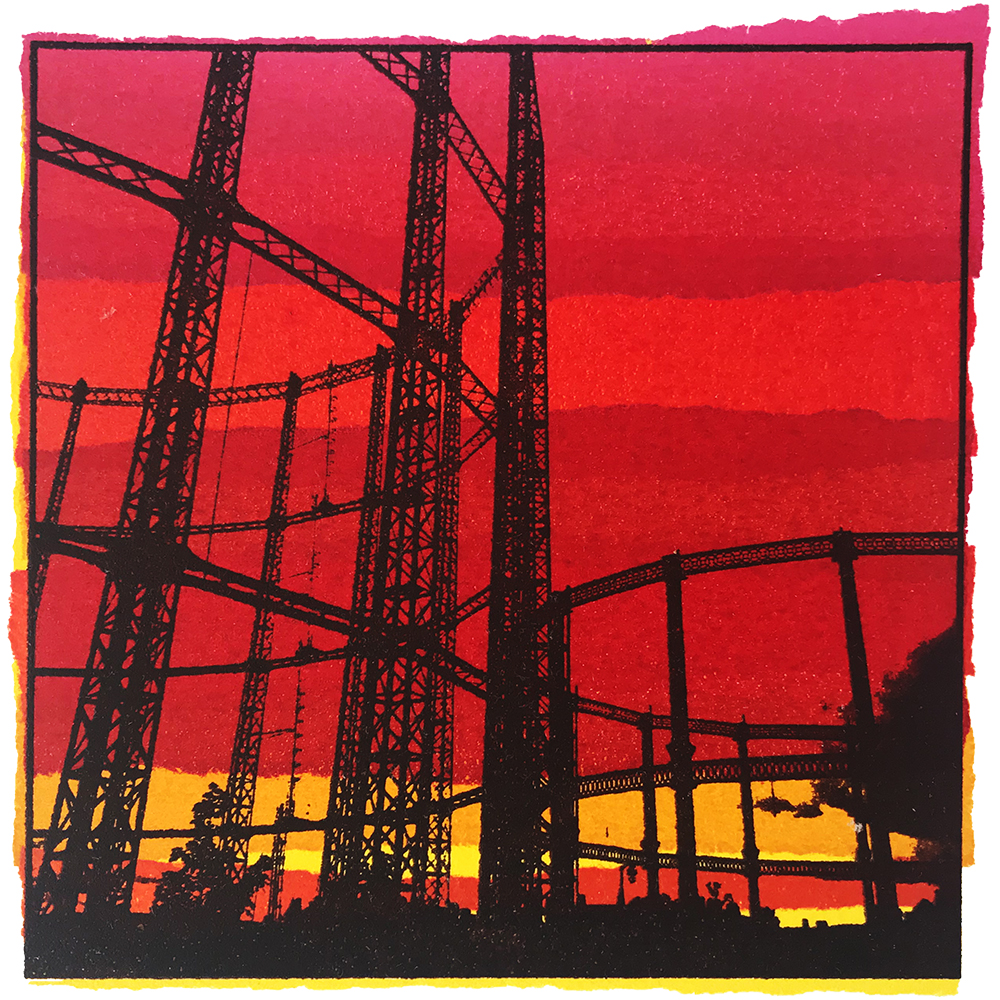
Screenprinting is a stencil process which is also known as silkscreening or serigraphy.
A screen is
There are many variations which include hand drawn and painted monoprints, the use of
Hand cut paper stencils
Screenprinting traditionally creates a sharp-edged single-colour image. The simplest approach using cut-paper stencils can give striking results with rich and vibrant planes of colour.
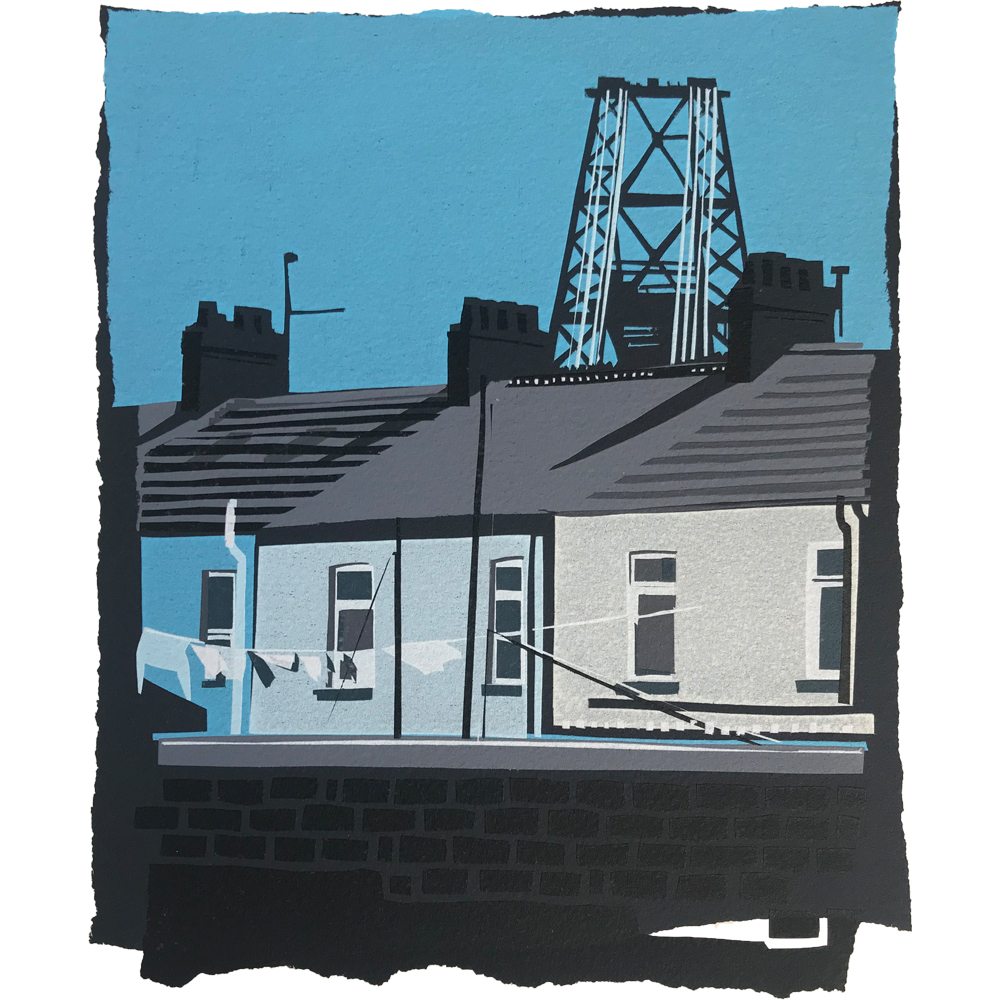
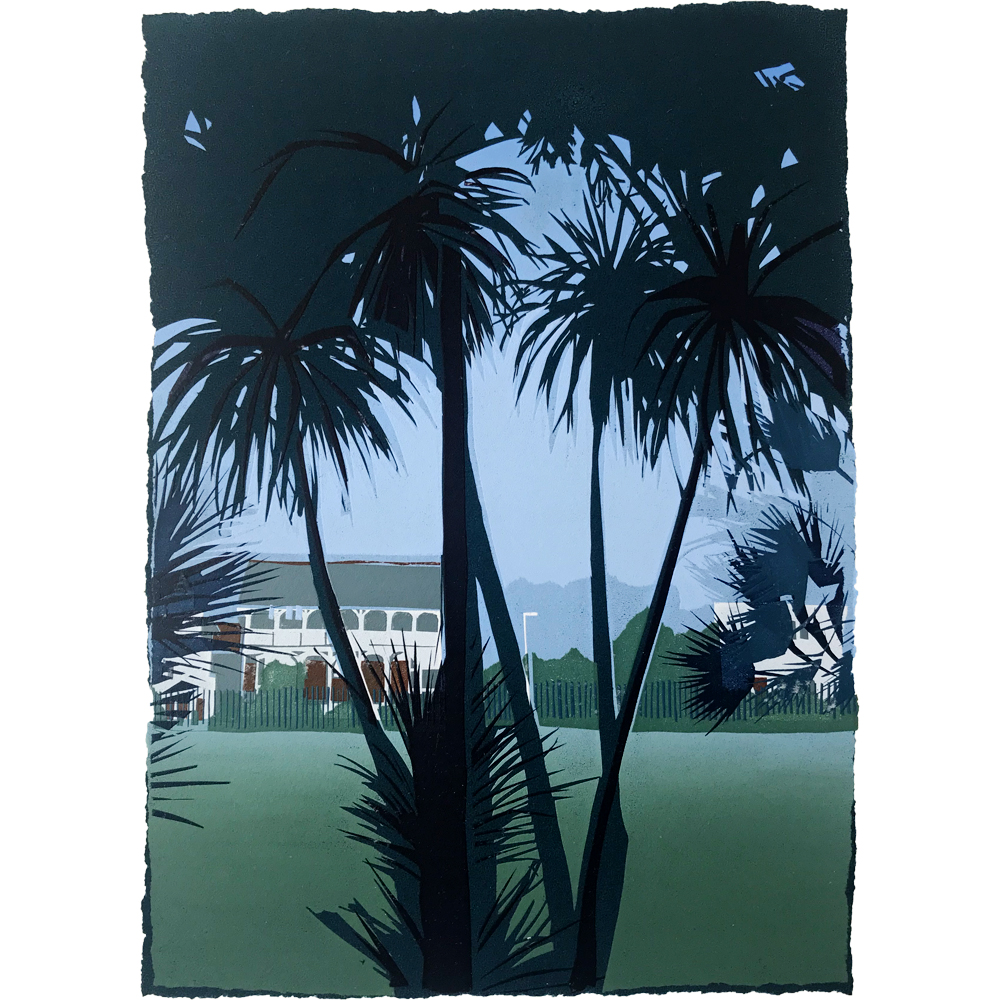
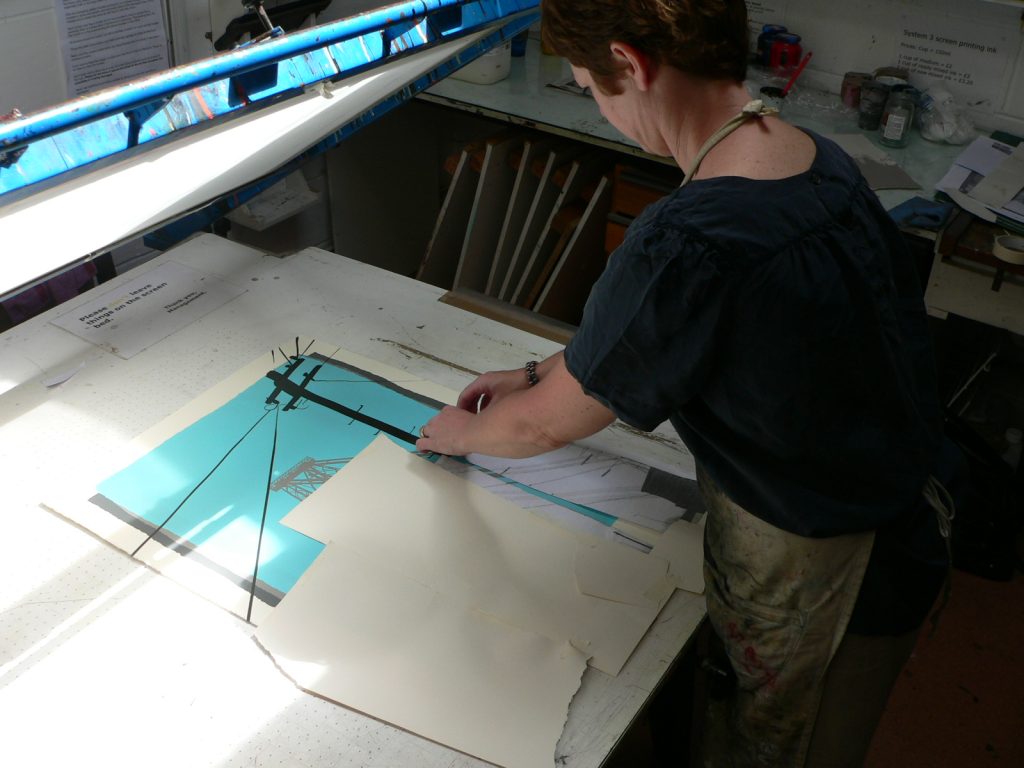
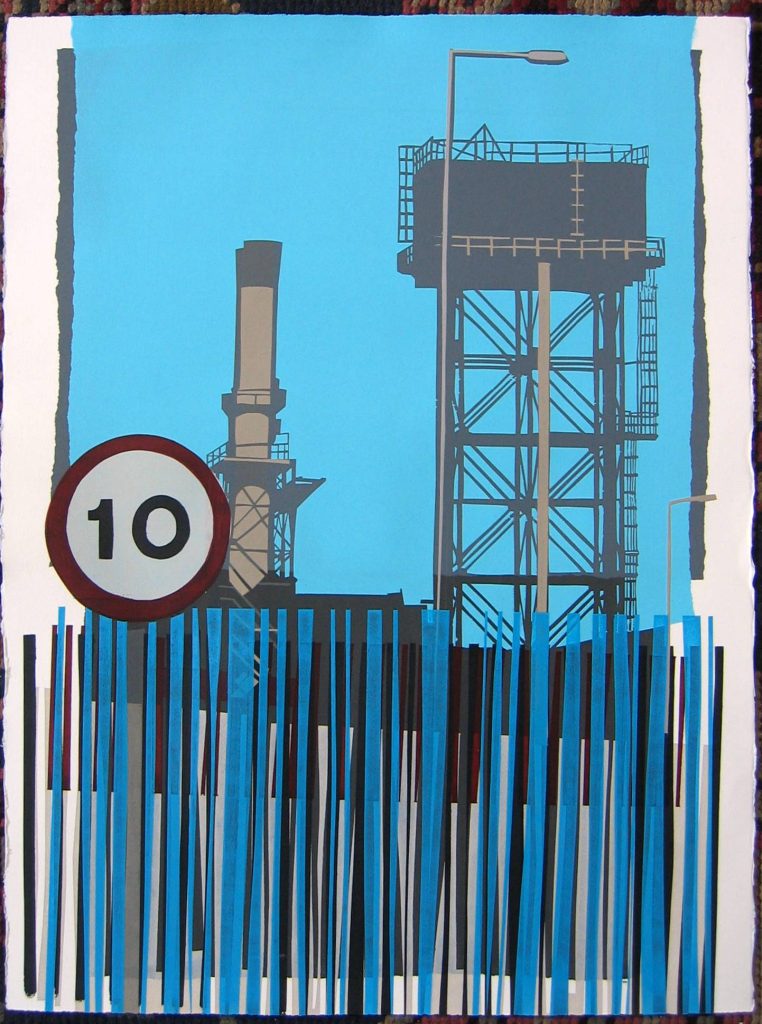
Sarah Hopkins runs regular very popular workshops in this technique with highly successful results from beginners and experienced artists alike
The screen is placed on top of a piece of dry paper or fabric. Ink is placed on top of the screen, and a squeegee (rubber blade) is used to spread the ink evenly across the screen. The ink passes through the open spaces in the screen onto the paper or fabric below; then the screen is lifted away. The screen can be re-used after removing the stencil and cleaning.
If more than one colour is being printed on the same surface, the ink is allowed to dry and then the process is repeated with another screen and different coloured ink thus producing a multi-coloured print.
Photostencils
Photostencils, or photographic screens, can reproduce images with a high level of detail, and a variety of marks such as painterly washes, linear drawings, photocopied images and text. They can be reused for thousands of copies and are therefore especially suitable for producing editions of work. The ease of producing transparent overlays from any black-and-white image using a photocopier makes this the most convenient method for artists who are not familiar with other printmaking techniques.
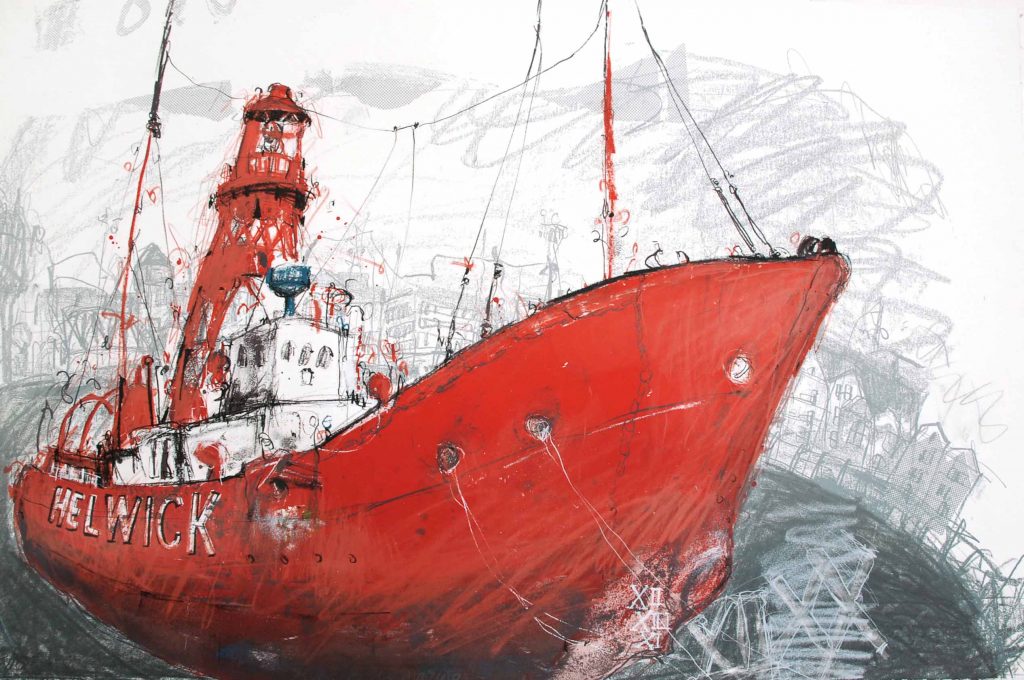
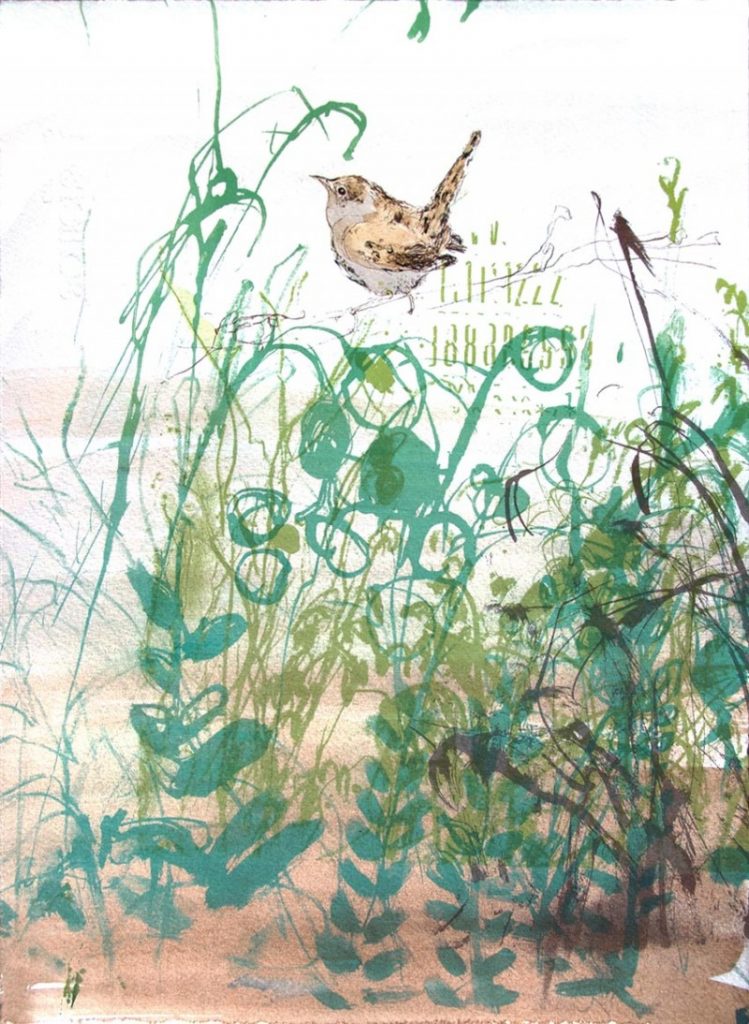
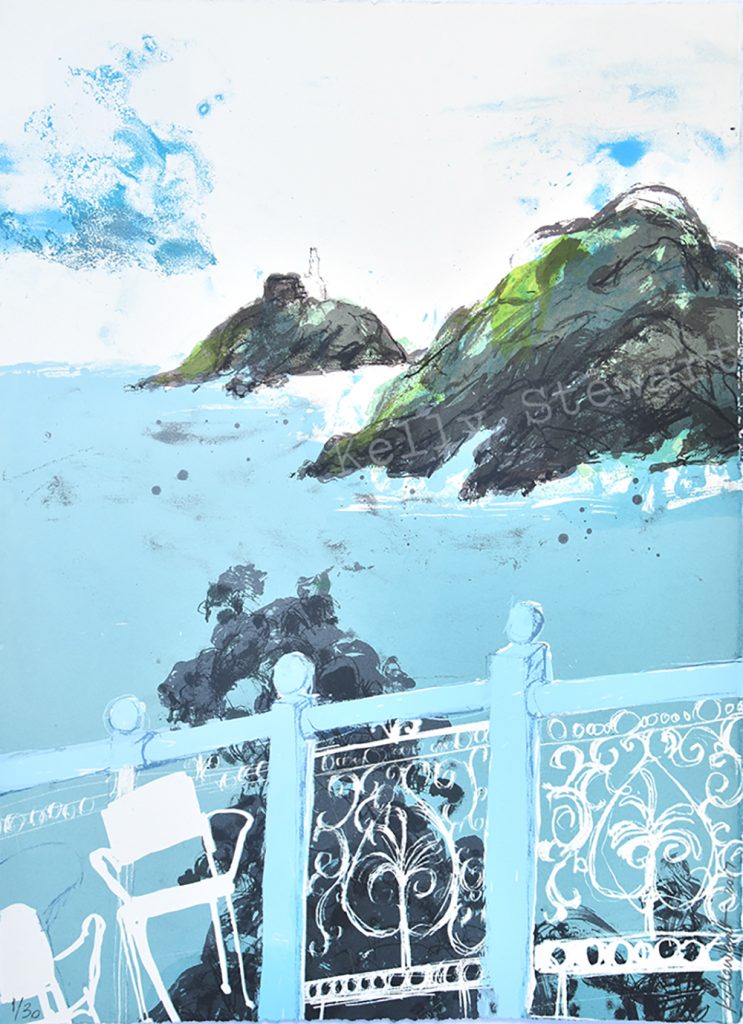
Kelly Stewart is a member of Edinburgh Printmakers. She visits us twice a year to run very popular drawing and printmaking days.
She is a featured artist on our digital exhibition website
She has a fabulous range of work for sale on her website, on our website and in the Gower Gallery Mumbles
The original image is placed on a transparent sheet or acetate. The image may be drawn or painted directly on the overlay, photocopied, or printed with a laser printer, as long as the areas to be inked are opaque
A screen is coated with a light-sensitive ‘photo-emulsion’ and allowed to dry. The overlay is placed over the coated screen, and then exposed with an ultra violet light source light. The areas that are not opaque in the overlay allow light to reach the emulsion, which hardens and sticks to the screen
The screen is washed off thoroughly. The areas of emulsion that were not exposed to light – corresponding to the image on the overlay — dissolve and wash away, leaving a negative stencil of the image attached to the screen. Once the screen is dry the screenprint can be made as before.
Screenprinting Inks
There are a wide variety of inks available for screenprinting, some of them very specialised for printing onto glass, plastics, fabrics etc.
In the studio we use a water based ink which is non soluble when dry but clears up easily with water before drying occurs. The inks consist of pigment plus medium and it is possible to mix a completely opaque ink or one that is very transparent. Many of the cellulose based inks require aggressive chemicals to clean up and give off fumes. These inks are very safe to use and have good archival characteristics.
Historical Background to screenprinting
The earliest form of screenprinting was simple stencilling, most notably the Japanese ‘katazome’
The modern screenprinting process originated from patents taken out in the early 1900s in England. The idea was then adopted in the USA and in 1914 multi-colour prints were created.
During the First World War screenprinting was used as an industrial process for printing flags and banners. The use of photographic stencils at this time further increased the versatility of the process and encouraged its wide-spread use.
During the 1930s a number of American artists began making artworks in screenprint and by the end of that decade the term ‘serigraph’ was devised to distinguish artists’ prints from commercial prints.
During the 1960s screenprints came into greater prominence, particularly due to the Pop Art movement. Pop artists were attracted to their bold areas of unmodulated colour, their flat surfaces and their generally commercial look.
Many of Andy Warhol’s most famous works were created using the technique.
Screenprinting is currently popular both in Fine Art and in small-scale commercial printing, where it is commonly used to put images on T-shirts, hats, ceramics, glass, polyethylene, polypropylene, paper, metals, and wood.
In electronics, the term silkscreen or silkscreen legend often refers to the writing on a printed circuit board. Screenprinting may also be used in the process of etching the copper wiring on the board.
If you would like the opportunity to learn this process see our list of workshops or book a one to one session with a tutor.
